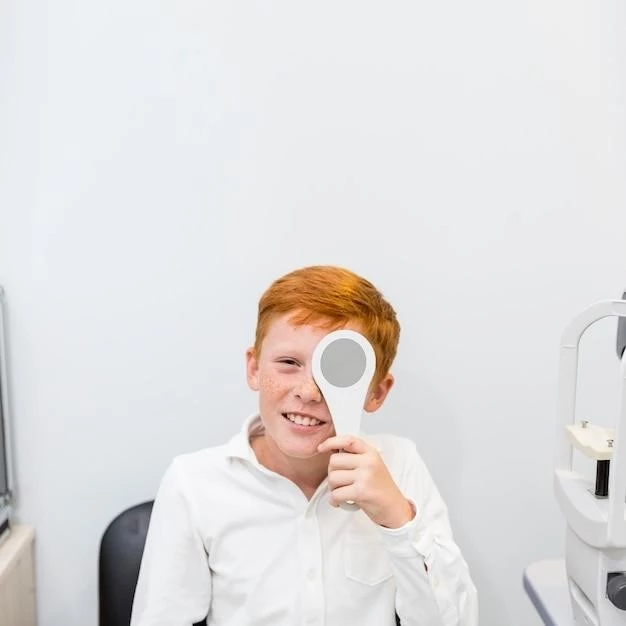Introduction
Oculomaxillofacial Dysplasia with Oblique Facial Clefts is a rare congenital anomaly affecting bone and eye tissues.
Overview of Oculomaxillofacial Dysplasia with Oblique Facial Clefts
Oculomaxillofacial Dysplasia with Oblique Facial Clefts, also known as Oblique Facial Cleft Syndrome, is a rare congenital anomaly characterized by extremely rare oblique facial clefts affecting a small percentage of individuals with facial clefts. These anomalies occur due to a range of genetic associations and can involve tissues related to the bone and eyes. The clinical presentation of this condition varies, and patients may experience unique phenotypes such as corneal opacity and abnormal dentition.
Understanding the Condition
Oculomaxillofacial Dysplasia with Oblique Facial Clefts is a rare congenital anomaly affecting bone and eye tissues.
Causes and Genetic Association
Oblique facial clefts are extremely rare congenital anomalies that may result from genetic factors such as mutations in genes like SPECC1L. The anomalies involve tissues in the bone and eyes, leading to unique phenotypes like corneal opacity and abnormal dentition.
Symptoms and Phenotypes
Individuals with Oculomaxillofacial Dysplasia may present with unique characteristics such as corneal opacity and abnormal dentition, which are associated with the rare oblique facial clefts. Symptoms can vary, and the onset of manifestations like these may provide diagnostic insights into this congenital anomaly.

Diagnosis and Classification
Oblique facial clefts are extremely rare congenital anomalies with varied genetic associations affecting bone and eye tissues.
Diagnostic Methods and Tools
The diagnosis of Oculomaxillofacial Dysplasia with Oblique Facial Clefts often involves genetic testing to detect mutations in genes like SPECC1L. Imaging techniques such as CT scans and X-rays are utilized to assess bone and eye abnormalities associated with oblique facial clefts. Additionally, clinical evaluation and phenotypic analysis play a crucial role in confirming the presence of this rare congenital anomaly.
Classification of Oblique Facial Clefts
Oblique facial clefts, such as those associated with oculomaxillofacial dysplasia, are classified as rare congenital anomalies affecting bone and eye tissues. These clefts may be subdivided into various types, including nasoocular and oroocular categories, each presenting distinct challenges in diagnosis and treatment.
Treatment Approaches
Novel techniques and therapies are utilized for the complex treatment of Oculomaxillofacial Dysplasia with Oblique Facial Clefts.
Surgical Interventions
Surgical treatments for Oculomaxillofacial Dysplasia with Oblique Facial Clefts involve specialized procedures to address bone and eye tissue abnormalities associated with the rare oblique facial clefts. Surgeons employ precise techniques to reconstruct affected areas and improve patients’ functional and aesthetic outcomes.
Novel Techniques and Therapies
In the treatment of Oculomaxillofacial Dysplasia with Oblique Facial Clefts, novel techniques and therapies are being explored to address the complexities associated with this rare congenital anomaly. These innovative approaches aim to enhance surgical outcomes and improve long-term patient well-being by targeting the bone and eye abnormalities unique to individuals with oblique facial clefts.

Prognosis and Complications
Potential complications of Oculomaxillofacial Dysplasia may vary, affecting bone and eye tissues with long-term prognosis implications.
Potential Complications of Oculomaxillofacial Dysplasia
Oculomaxillofacial Dysplasia could lead to complications involving bone and eye structures, impacting the long-term health and well-being of individuals with oblique facial clefts.
Long-term Prognosis for Patients
Patients diagnosed with Oculomaxillofacial Dysplasia with Oblique Facial Clefts may experience a range of challenges affecting their bone and eye tissues. Understanding the long-term prognosis is crucial in managing the condition and providing appropriate care to improve patients’ quality of life.
Research and Advances
Explore the latest research and advancements in understanding Oculomaxillofacial Dysplasia with Oblique Facial Clefts.
Current Studies and Clinical Trials
Research into Oculomaxillofacial Dysplasia with Oblique Facial Clefts includes investigations into the genetic basis, diagnostic approaches, and treatment modalities. Clinical trials are exploring innovative strategies to enhance patient outcomes and quality of life.
Emerging Treatments and Innovations
As the understanding of Oculomaxillofacial Dysplasia with Oblique Facial Clefts evolves, emerging treatments and innovative approaches are being researched to address the complexities of this rare congenital anomaly. These advancements aim to improve diagnostic methods, surgical interventions, and long-term patient outcomes by implementing novel techniques and therapies tailored to individuals with oblique facial clefts.
Patient Support and Care
Find resources and learn about the importance of multidisciplinary care teams for individuals with Oculomaxillofacial Dysplasia.
Resources for Patients and Families
For individuals and families affected by Oculomaxillofacial Dysplasia with Oblique Facial Clefts, accessing reliable resources for support and guidance is crucial. These resources can offer information on the condition, treatment options, and provide assistance in navigating the complexities associated with this rare congenital anomaly. Patient organizations, medical professionals, and online platforms can serve as valuable sources of information and community support for those impacted by oblique facial clefts.
Importance of Multidisciplinary Care Teams
The collaborative approach of multidisciplinary care teams is essential in managing Oculomaxillofacial Dysplasia with Oblique Facial Clefts, ensuring comprehensive care that addresses the complex needs of individuals affected by this rare congenital anomaly. By involving specialists from various medical fields such as genetics, maxillofacial surgery, ophthalmology, and more, patients and their families can receive holistic and personalized support throughout their treatment journey.
